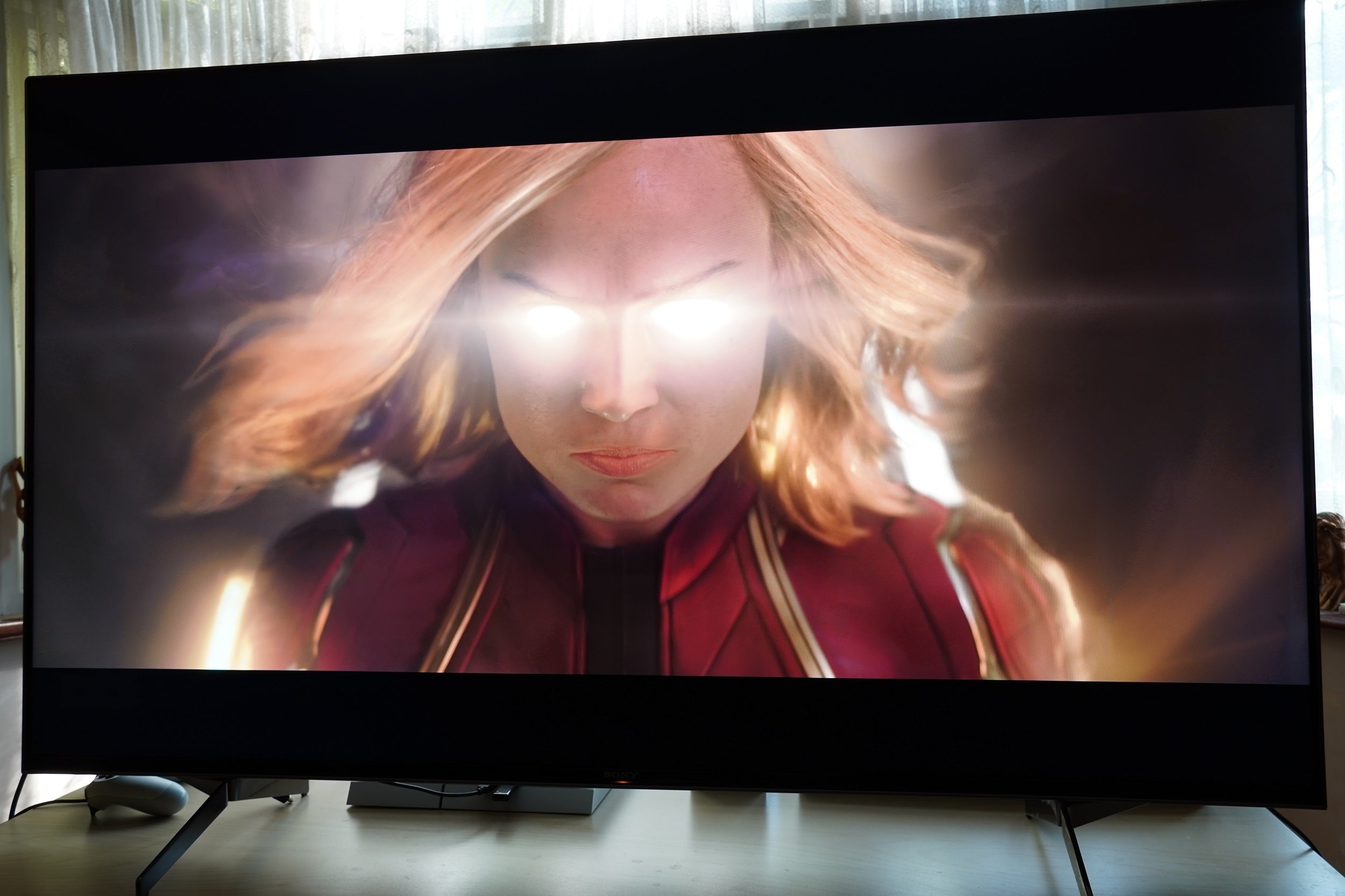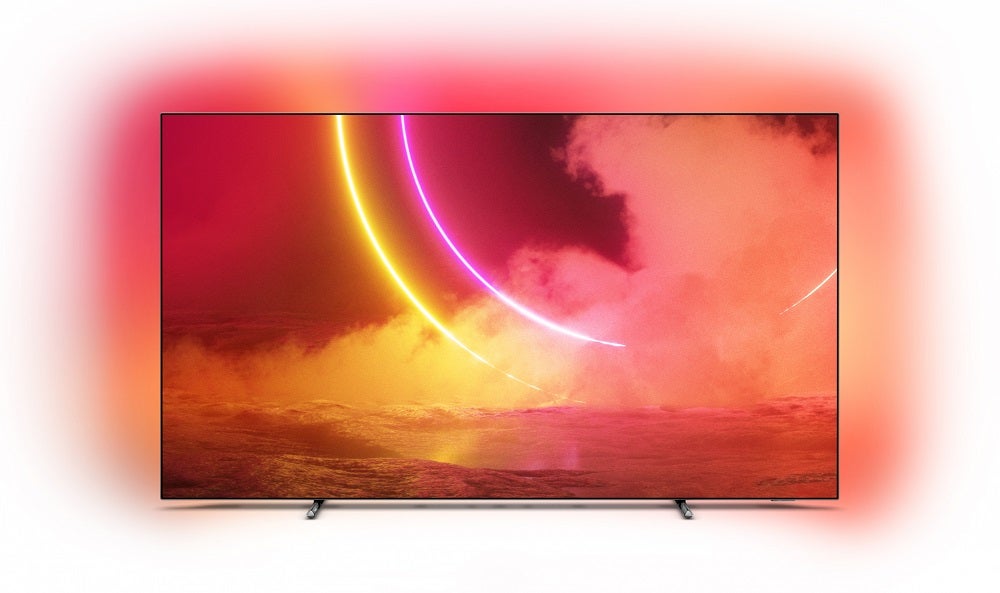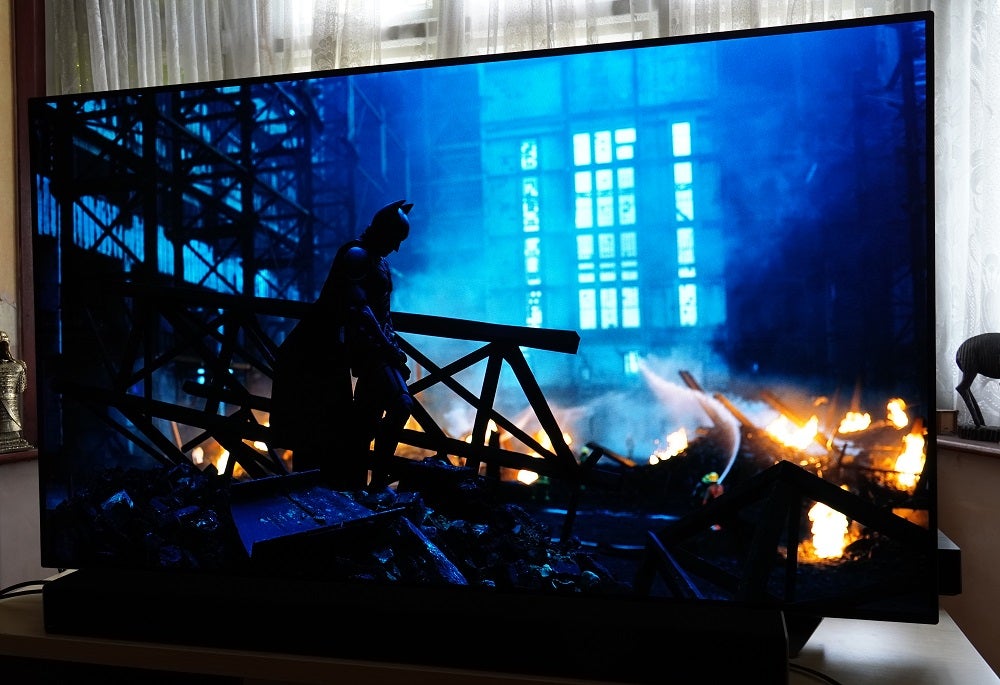Samsung QE55Q95T Review
Another satisfyingly bright and punchy QLED performer from Samsung
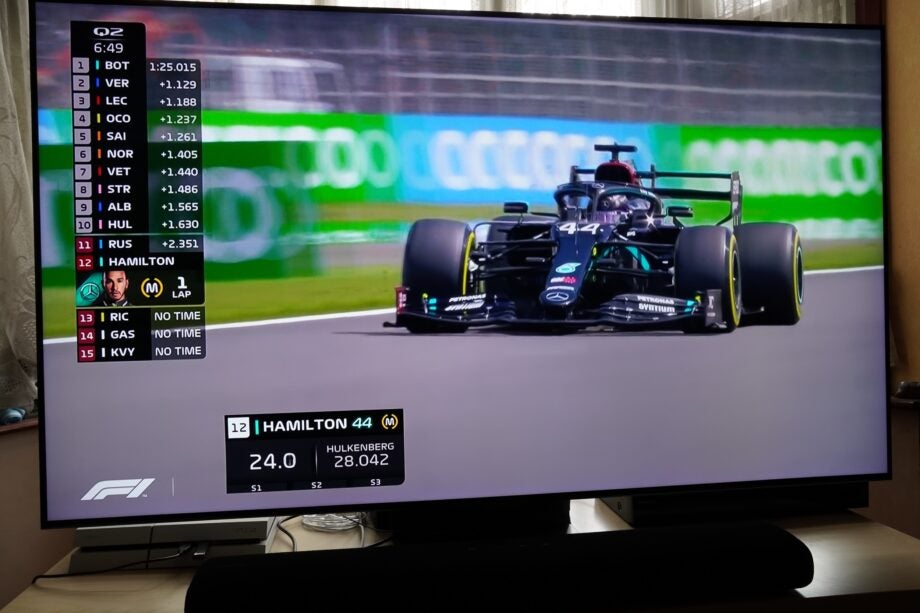

Verdict
The Samsung QE55Q95T puts in an excellent all-round performance. It delivers in terms of picture quality across a range of sources; it delivers the quickest gaming performance of any brand, it has all the apps and while its audio performance is the least terrific aspect, it’s nevertheless respectable. The lack of Dolby Vision remains a sore point. It’s an impressive TV and a bit of bargain at its current price.
Pros
- Terrifically bright and punchy HDR performance
- Class-leading gaming performance
- Stylish design
- Impressive upscaling
- Wide app support
Cons
- No Dolby Vision HDR
- Requires creating a Samsung account to download additional apps
Key specification
- Object Tracking Sound
- AMD FreeSync
- HDR10+
- Game Motion Plus
- Full Array Local Dimming
- Ultra Wide Angle Viewing
- Tizen OS
The Samsung Q95T is the South Korean manufacturer’s flagship 55-inch 4K QLED for 2020. Except it’s not the technical powerhouse some expected.
It doesn’t have the specs of the 2019 Q90R, whose true successor is the Q800T 8K TV, whereas the Q95T is a more advanced version of the 2019 Q85R.
And that is no bad thing. We gave the Q85R five stars in November 2019, and at the time of review the Q95T was only a couple hundred pounds more than a TV we called a “bit of a bargain”. So, does Samsung have another bargain on their hands with the Q95T?
Price and availability
The Samsung QE55Q95T has an RRP of £1799/€2200/AUD$2999. It has similar specs to the Q90T QLED except the Q95T features the One Connect box that handles the TV’s processing and connections. The Q95T is not available in the US and Canada, which get the Q90T instead.
Design
-
Designed with wall-mounting in mind
-
Features the OneConnect box
-
Good remotes
The Samsung Q95T looks every bit the flagship 4K TV. It’s an elegant set with minimalist feel and great build quality.
The thin bezel gives the 55-inch screen space to present its images with few distractions, while the central stand not only provides height, but the impression the screen extends out towards the viewer.
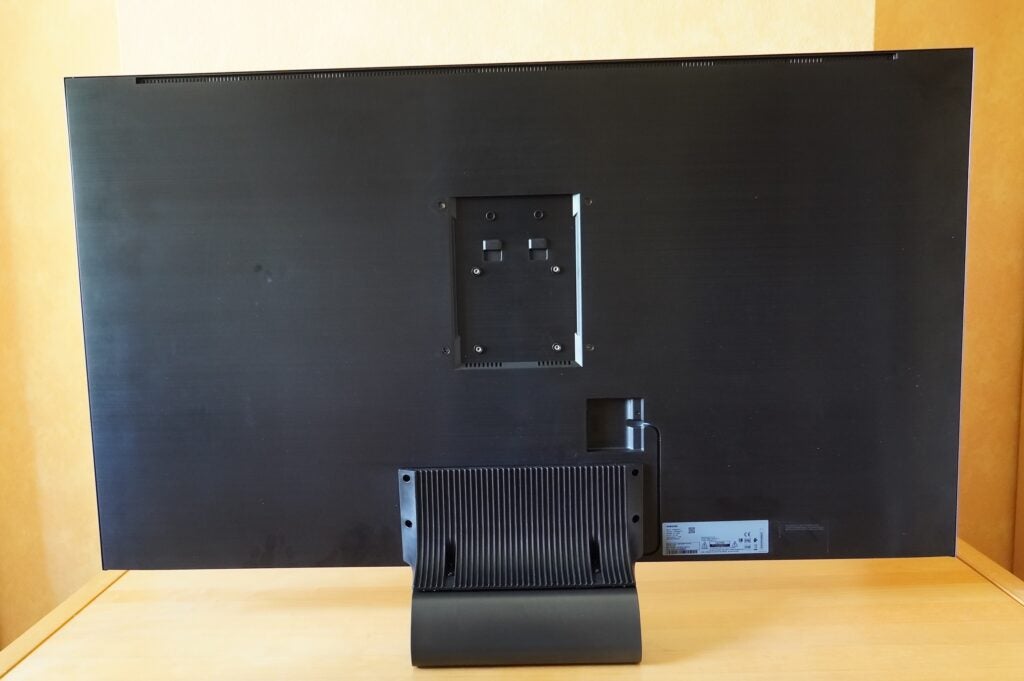
The main difference between the Q90T and Q95T is the inclusion of the One Connect box. That means there aren’t connections on the rear panel – the One Connect feeds the power, audio and video to the TV via a cable. It also makes the Q95T better suited for wall mounting as it’s slimmer without the built-in connections and can sit flush against a wall.
As is the case with Samsung’s higher-priced TVs, you get two remotes – a standard clicker and a more elegant silver version with a built-in microphone, along with volume and channel rockers. Both remotes have hotkeys to Netflix, Prime Video and Rakuten TV.
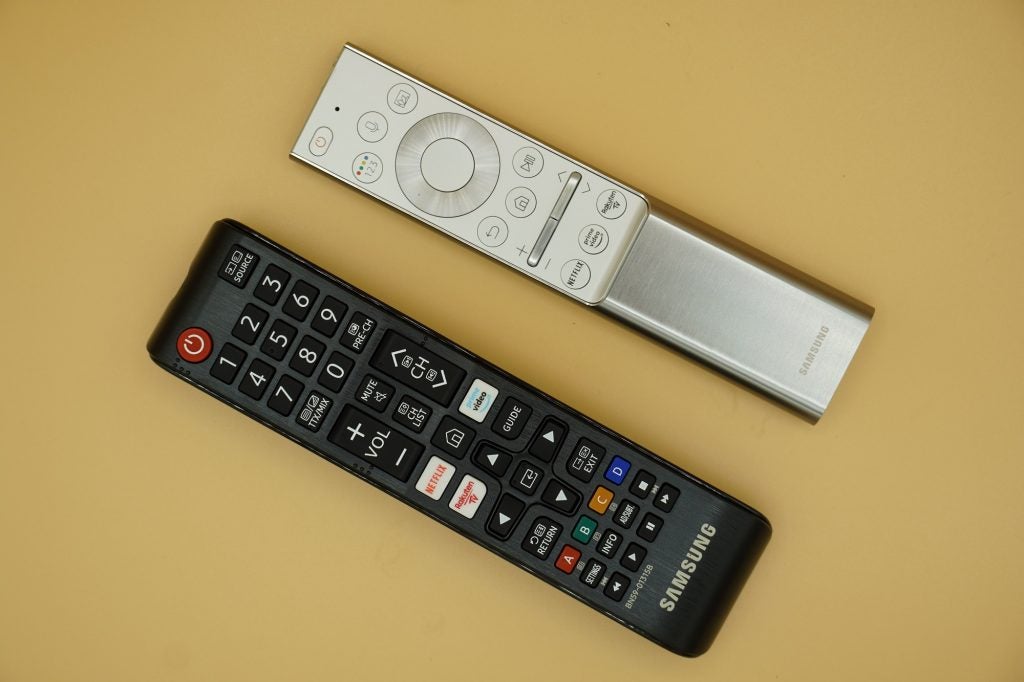
Features
-
No Freeview Play but all UK catch-up apps feature
-
Lots of smarts and ‘lifestyle’ features
-
Class-leading gaming performance
The Tizen operating system returns and it’s easy to navigate and mostly responsive. It features all the major on-demand and UK catch-up apps and while Apple TV and BT Sport no longer exclusives, Samsung still has Apple Music. There are the usual suspects in Netflix, Prime Video, Disney+, YouTube and Rakuten TV, and there’s the ability to ‘peak’ into the app. The lack of Freeview Play only concerns the EPG (electronic programme guide) as the main catch-up apps are present in BBC iPlayer, ITV Hub, All 4 and My5. As is BBC Sounds.
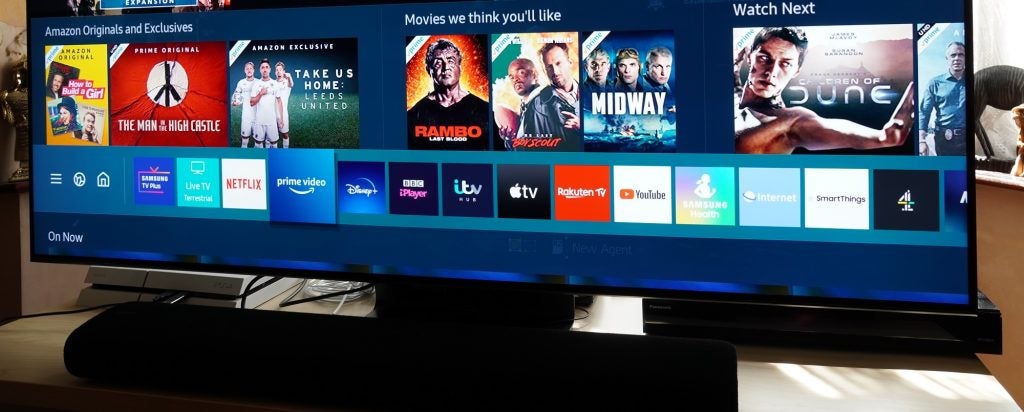
One aspect of Tizen that grates is the requirement to create a Samsung account to download more apps. It’s annoying, and the process of creating an account took nearly 30 minutes, which is about 25 minutes too long. Alexa and Bixby (Samsung’s smart assistant) are built-in, and by the time you read this Google Assistant should be available.
Powering the picture is the Quantum Processor 4K, which uses artificial intelligence to upscale standard-def and high-def content to near-4K quality. Other Intelligent AI features include Adaptive Picture mode, which adapts brightness in real-time to in relation to ambient light levels. Adaptive Sound+ analyses audio, as well as the area around the TV, to optimise delivery.
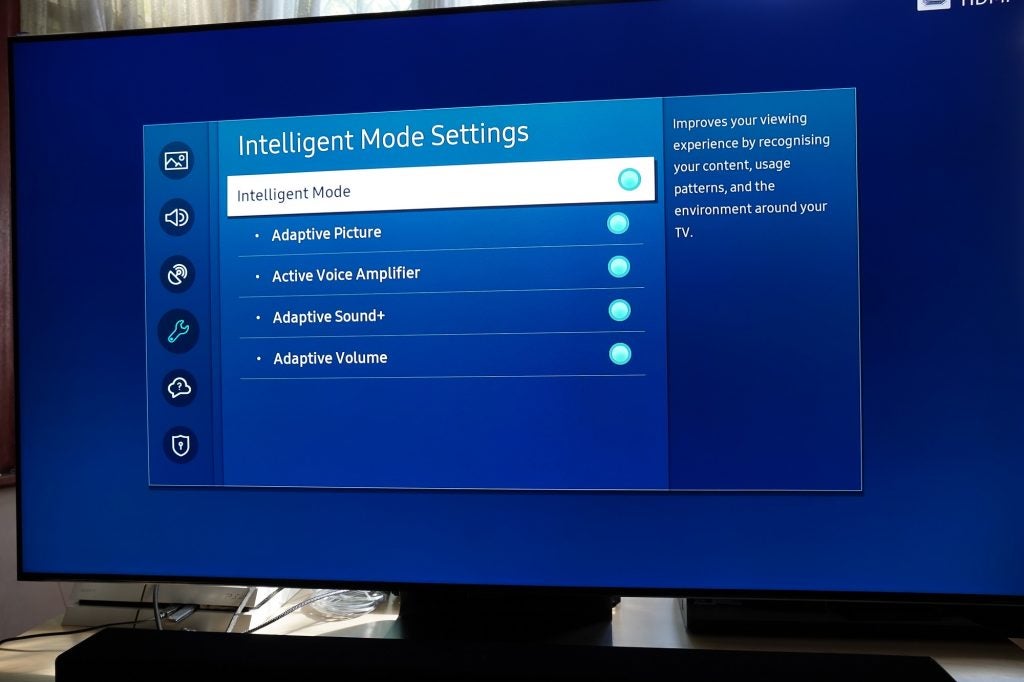
Adaptive Volume adjusts volume levels based on usage patterns, while Active Voice Amplifier (AVA) analyses background noise and boosts vocals for clarity. You get a choice to activate AI settings during set-up, or you can toggle them individually in the General section of the Settings menu. If you do opt in, give Adaptive Picture a wide berth as image quality is not as good.
The screen is supposedly anti-reflective, but I could still spot a few reflections on the display. The Ultra Wide Angle Viewing technology reduces the loss of colour and contrast at acute angles, and unless you’re sitting with your nose pressed to the screen, you shouldn’t notice any loss.
Head-on Ultra Wide Viewing Angle

Ambient Mode+ turns that big black abyss of a screen into a background for art, nature backgrounds or your own pictures. Multi-View splits content so you can watch two different sources simultaneously. For example, playing a game while casting from YouTube to bring up a tutorial.
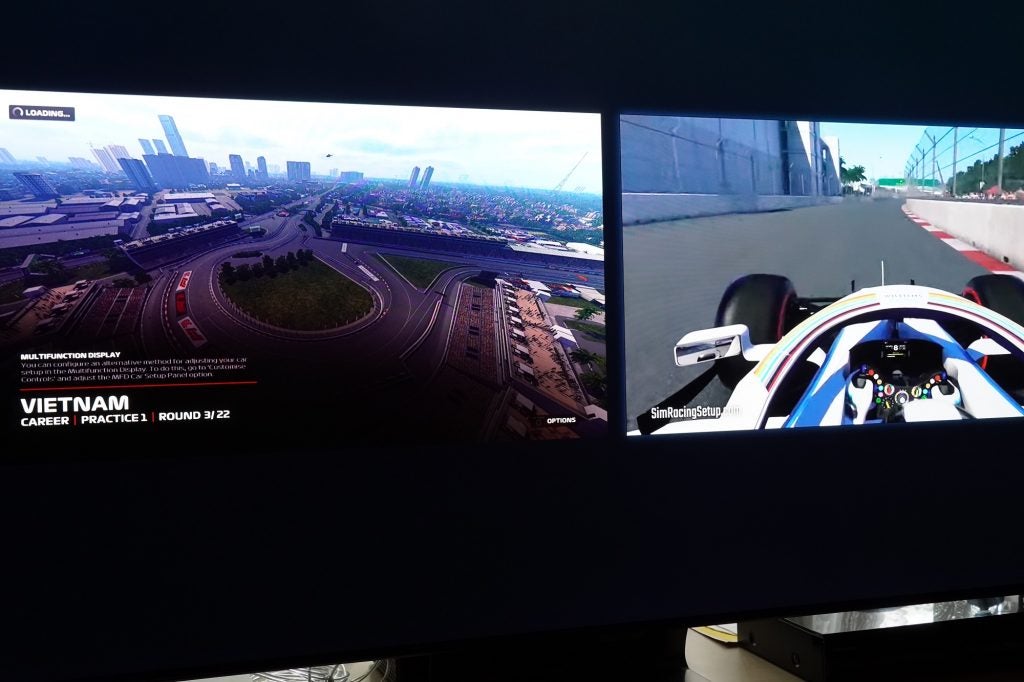
The size of the screens, position of the PiP (Picture in Picture) and which source is the priority for audio can be tweaked. It does have a habit of turning on nearly every time I cast to the TV, and I’ve not figured out how to stop this.
Filmmaker Mode is supported, and thanks to an update it can be selected from the picture presets. It disables processing, but Samsung suggests you use its own Movie preset as there’s zilch in terms of Filmmaker Mode content now. The only difference is that there’s a bit more contrast here than the Movie preset.
Cinema mode Filmmaker Mode

The Samsung Q95T is optimised for the PS5 and Xbox Series X. The TV supports ALLM (Auto Low Latency Mode) for automatically plunging the display into Game Mode, and VRR (Variable Refresh Rate) for synching the TV’s refresh rate with the console’s frame rate for less tearing. There’s also High Frame Rate support in 4K@120Hz.
Samsung provides two options for gamers in Game Mode and Game Motion Plus. The former offers a class-leading blink-and-you-miss-it 9.3ms latency. It can, however, lead to some flickering.
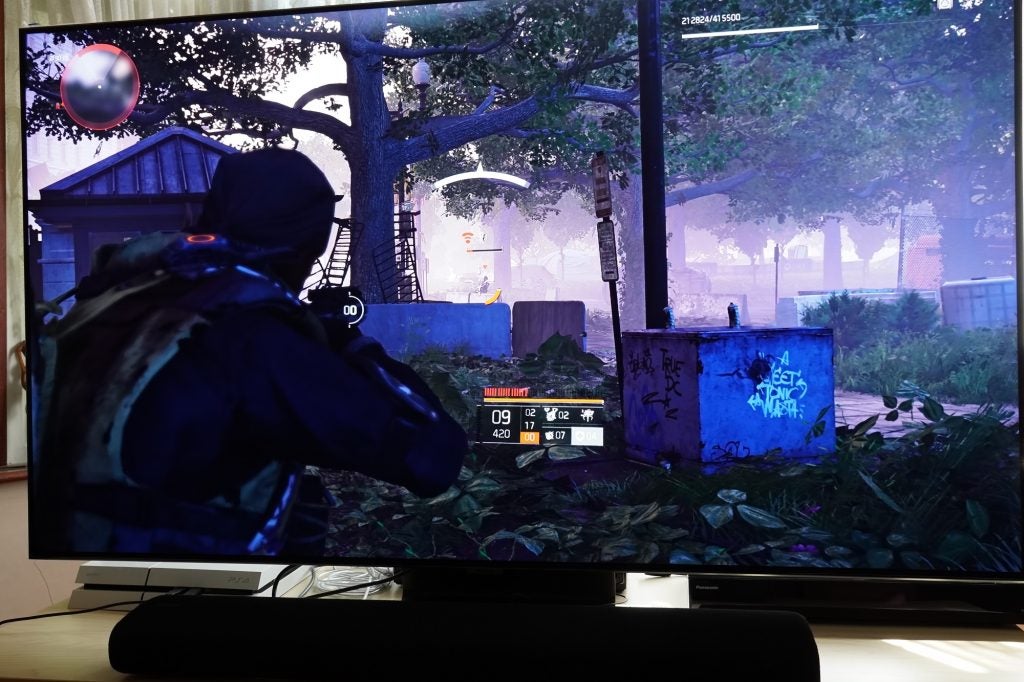
Which is where Game Motion Plus becomes useful. It reduces flickering and smooths out images but in doing so it introduces several milliseconds of latency on top (19.3ms). Picture and brightness are slightly improved, though I would say it shouldn’t be switched on for fast-twitch games such as Call of Duty: Warzone or Apex Legends. Samsung QLEDs don’t yet feature Nvidia G-Sync, and last I heard from Samsung it was still in the process of certification. AMD Freesync is available, though.
The One Connect box houses all the connections. The 2020 edition is not as wide or as heavy as the 2019 version, but it is a smidge deeper. Around the back are four HDMI – including eARC (HDMI 3) – Ethernet, Optical, a CI+ 1.4 connection, aerial and satellite tuners, an EX-Link port, plus two side-facing USB 2.0 ports (down from 2019’s three). Bluetooth 4.2 is included for wireless connectivity, as well as Wi-Fi and DLNA compatibility.
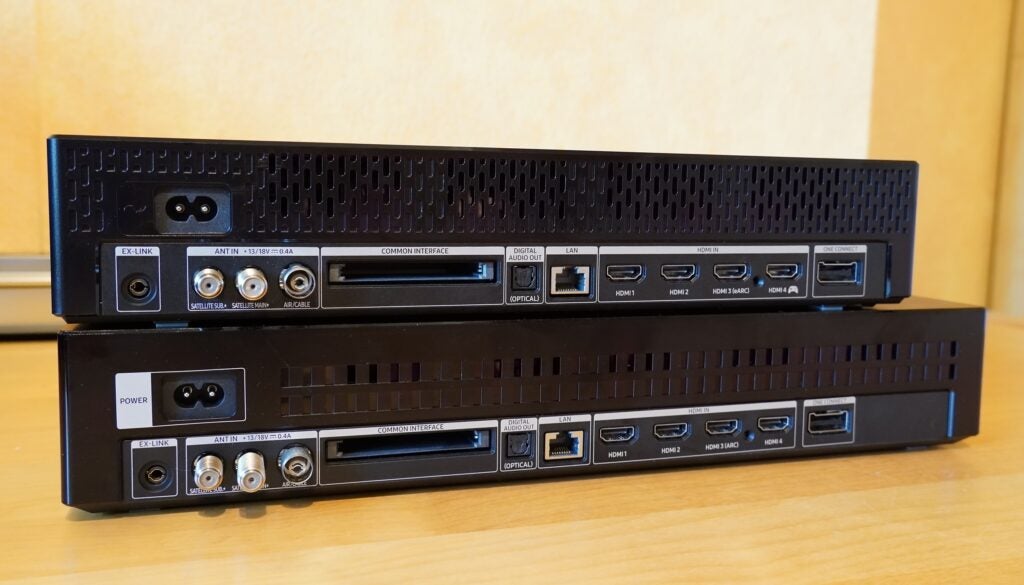
The 2019 OneConnect box on the bottom and the 2020 version on top
Picture quality
-
Bright, clean and colourful images
-
Great at upscaling SD and HD signals
-
Lacks Dolby Vision HDR
The QE55Q95T delivers a clean, colourful and fantastically bright image irrespective of the source. Both broadcast and content from streaming services are handled well, with HD a showcase for strikingly clear colours, detail, and a natural-looking presentation. There are times where complexions can be shiny and faces slightly smooth, but this is the case with all TVs upscaling HD content.
SD HD

Standard definition content is also capably handled. While there’s an obvious lack of definition, clarity and sharpness, there’s no egregious artifacting or distracting halos, and colours are reasonably on target compared to the HD signal.
In HDR terms there’s HDR10, Broadcast HLG (for BBC iPlayer, Sky Q) and HDR10+. HDR10+ offers more headroom for a manufacturer to tailor dynamic HDR metadata to their display, but at the time of review there’s not as much HDR10+ content as there is Dolby Vision. The benefits from HDR10+ stand to extra refinement of colours, brightness and tone.
HDR10 HDR10+

Samsung says the peak brightness is 2000 nits. Average brightness is less, and likely around what the QE65Q95T can do in similar situations, while ahead of what OLED and LCD displays can muster.
Moving onto motion and it is handled well enough. With Blur and Judder at 4/4, jerkiness of broadcast content is mostly ironed out despite a few stutters here and there. When it comes to fast movement in sports such as football and motorsport, while there’s a bit of untidy edge definition, the Q95T mops it up quickly. It’s an improvement on the 2019 sets, but Panasonic and Sony still best Samsung in this field.
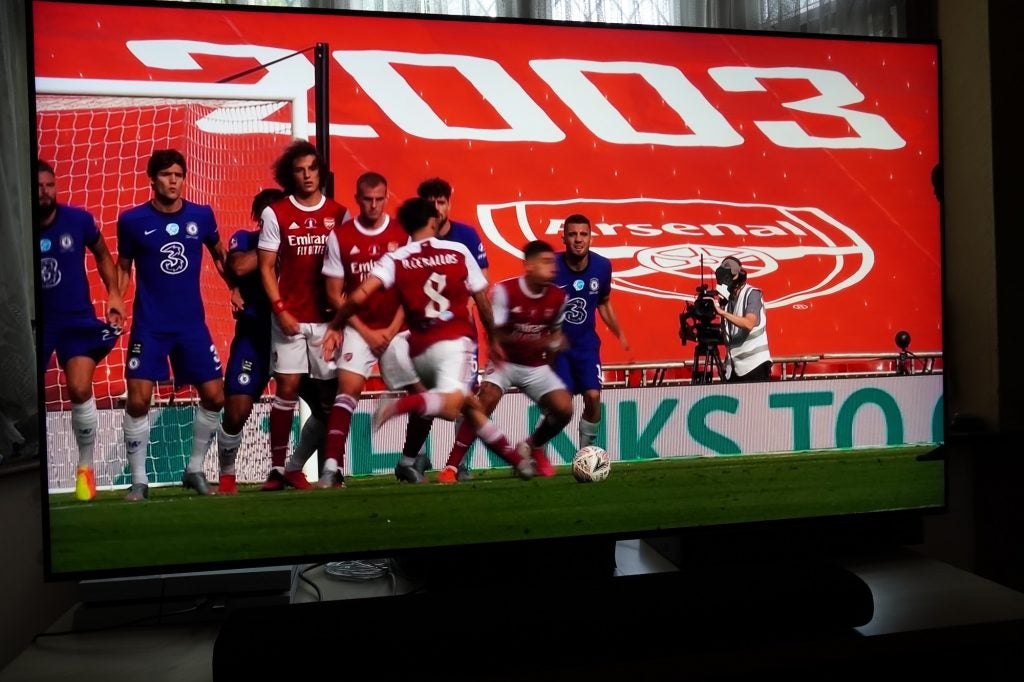
The Q95T’s local dimming performance offers very good black levels and brightness without ever becoming distracting. While dimming zones are around half as much as the 2019 Q90R, it’s a step-up on the Q85R, which had fewer than 100. The Q95T uses algorithms to compensate for the reduction and while more dimming zones would make it more nuanced, it’s hard to argue the performance on show is anything less than capable.
Captain Marvel’s escape from the Kree on Mar-Vell’s ship is given more pop and dynamism as Danvers goes full ‘binary’; the Q95T never out of step as Danvers grows in intensity. An earlier scene where Starforce attempts a rescue on Torfa and the Q95T offers good low light performance, with a good degree of detail and clarity despite the scene’s murkiness.
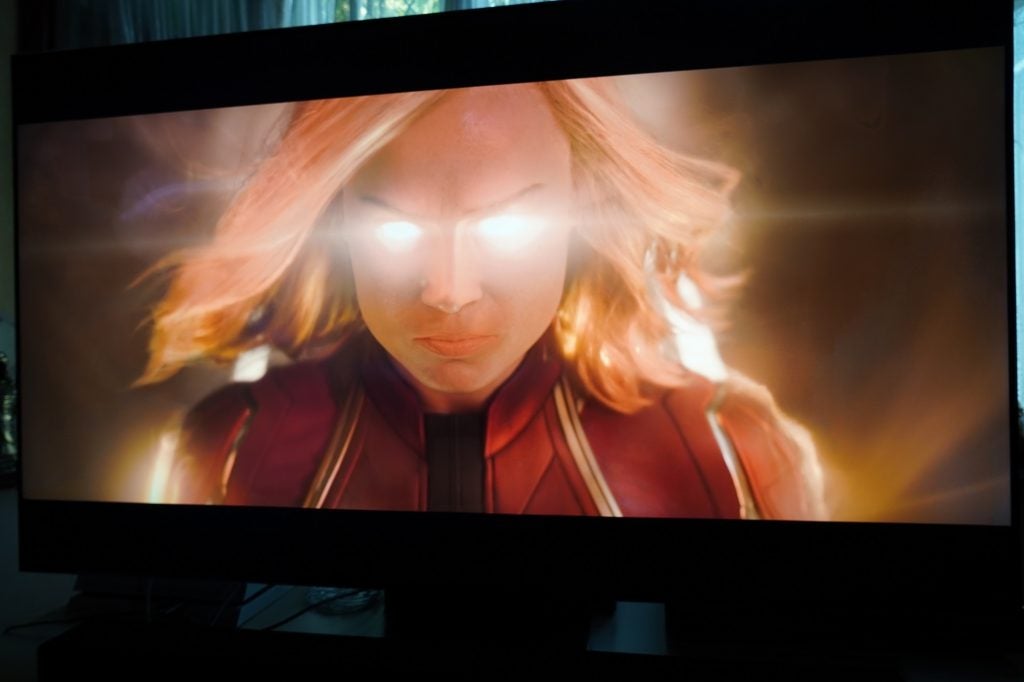
HDR performance is excellent, both nuanced and punchy in its description. The opening of Guardians of the Galaxy: Vol 2 is bright, in keeping with everything else the Q95T does, and colours are bold and rich – such as the blues and golds in The Sovereign’s throne room.
Blooming is kept to a minimum and you’d need a sharp eye to spot any backlight bleed. The reduction in dimming zones means the Q95T is better with bigger and bright objects, but to avert potential blooming with smaller objects, it appears to reduce the brightness (at least in Standard Mode).
In Movie mode colours are wonderfully natural and accurate. Detail levels are sky high – just look at the nicks, scratches and reflections in Thanos’ Avengers: Endgame armour – as the Q95T displays content with razor sharp fidelity and clarity.
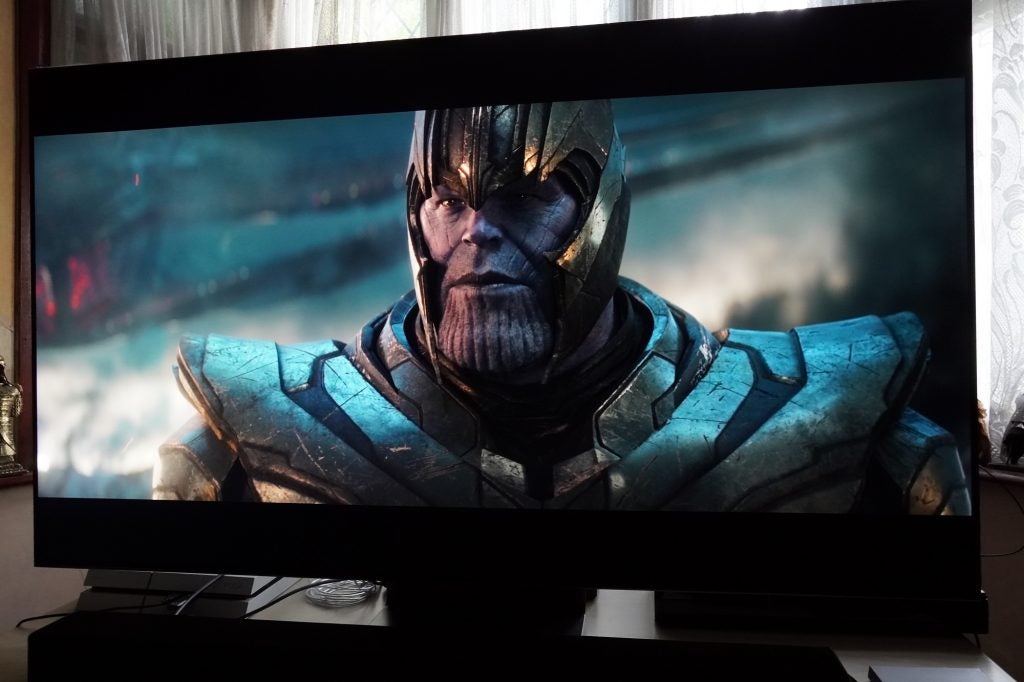
With Alien in HDR10+ the whites are impeccable throughout. It’s also a three-dimensional image, as the Q95T creates a sense of depth and space within the spaceship’s dank confines.
Skin tones appear spot on from Yaphet Kotto’s dark skin to John Hurt’s paler complexion. Black levels are deep, though there’s a sense near-dark details are slightly lost. Once into the film’s final third, you can see and feel the sweat on the crew – it’s never less than impressive.
Audio quality
- Features the new OTS system for accurate tracking of sounds
- OTS works even better with Samsung’s 2020 Q-Symphony soundbars
- Decent width and height with films
Samsung’s OTS (Object Tracking Sound) system is respectable, the 60W, 4.2.2ch set-up featuring speakers at the top and bottom of the screen. Bass response is modest and while it’s not the widest of presentations voices are well prioritised – more so when the Amplify function is used.
Give it Atmos content – OTS is not an Atmos system – and it stretches its legs. David Ayer’s WW2 tank drama Fury features a near-constant soundtrack of machinery, explosions and tanks in the background, and the Q95T captures that sense of distance and depth.
It also proves to be fairly accurate in the placement of effects. Bombing runs are given a noticeable sense of height just above the TV, while explosions expand to the top left and right corners. The OTS system lacks the intensity needed for Fury‘s action scenes but it gives the audio more room and specificity.
The Samsung Q95T supports Atmos from its OTT apps, which the 2019 QLED range initially didn’t. There’s no onboard decoding of Atmos content if that’s of bother as the TV passes it through to the connected device to do the decoding itself. The Q95T is also compatible with Samsung’s Q-Symphony soundbars such as the HW-Q950T for an even bigger soundscape.
You should buy it if…
-
You want an impactful HDR performance.
Samsung’s QLEDs are some of the brightest TVs on the market, and the Q95T offers a great showcase for the virtues of HDR.
-
You have any game console.
The Q95T can wring a speedy performance from any console that’s plugged into it, more so if it’s a next-gen console with its support for various new technologies.
-
You want all the apps.
The Tizen OS is home to the widest selection of apps on the market, so even though there’s no Freeview Play, all the UK catch-up apps are accounted for.
You shouldn’t buy it if…
-
You subscribe to streaming services with Dolby Vision.
Samsung continues to omit Dolby Vision HDR from its list of features, so you won’t get the optimisation of HDR luminance and depth. HDR10+, by comparison, isn’t as widely supported.
-
You want OLED’s perfect blacks and contrast.
You can buy a high-quality OLED for the same price as the Q95T, and while it won’t go as bright in terms of HDR, the LG CX or Philips OLED805 will beat it for black levels and contrast. Sometimes it’s not all about the brightness.
FAQs
This TV does not support Freeview Play
There is some forms of voice control offered by this TV
We were fairly impressed with the audio here so a soundbar isn’t a must. A good one will improve your sound though
The HDR formats supported by this TV include HDR10, HDR10+ and HLG
Specification
Jargon buster
HLG (Hybrid-Log Gamma)
HLG is a HDR format co-developed by the BBC and Japanese national broadcaster NHK for transmission of broadcast and live streamed content in HDR. It’s backwards compatible with SDR transmission standards, enabling people without a HDR TV to receive the same feed but downsampled.
Filmmaker Mode
Filmmaker Mode is a picture mode supported by some TV manufacturers that disables post-processing features (e.g. motion smoothing), and preserves the correct aspect ratios, colours and frame rates that respects the original author’s creative intent.
Upscaling
Upscaling refers to the process whereby a TV receives an image lower than its native resolution and fills in the missing information to create an image. Upscaling effectively guesses which pixels go where to make up the new image. The better the upscaler, the better the resulting image and with the advent of artificial intelligence, it has helped to make for more sophisticated guesses.
HDR10+
HDR10+ is a HDR format supported by Panasonic and Samsung as a free to use, open platform alternative to Dolby Vision. It adds dynamic metadata on top of the core HDR10 signal that tells a TV how it should adjust the brightness, colours and contrast of content for the most optimal picture quality.
QLED
QLED stands for Quantum-dot Light Emitting Diode. It’s a display technology that uses small particles (called Quantum Dots) made up of slightly different sizes that produce different wavelengths (colours) when light is shone through them. This filter helps to emit a brighter and wider gamut of colours than a conventional LED TV is capable of.
FALD
FALD stands for Full Array Local Dimming and is a more advanced version of Local Dimming technology. It divides a TV’s screen into zones where contrast/black levels can be controlled. In theory, the more zones there are, the more control over black levels and contrast there can be, resulting in a more dynamic looking picture.
HDR
HDR stands for High Dynamic Range and refers to contrast (or difference) between the brightest and darkest parts of an image. HDR content preserves details in the darkest and brightest areas of a picture, details that are often lost in old imaging standards. HDR10 is mandated to be included on all HDR TVs. It’s also supported by 4K projectors.
Q-Symphony
Q-Symphony combines a TV and soundbar speakers to play sound at the same time. They work in concert to track objects across the screen and produce a bigger soundstage. This is only supported by specific Samsung soundbars and premium QLED TVs.
Smart TV
A smart TV can connect to the internet, allowing them to stream online content over home Wi-Fi, connect to other devices (on the same network), as well as allowing the user wirelessly ‘cast’ content to the TV
OTS
OTS stands for Object Tracking Sound and is an audio technology created by Samsung available in their premium QLED TVs. It’s made up of speakers (both physical, and in some cases virtual) in the top, sides and bottom of a TV that can more accurately track objects on the display.
eARC
eARC (Enhanced Audio Return Channel) is the update to ARC and it boosts the bandwidth and speed, making room for object-based audio surround formats such as DTS:X and Dolby Atmos to be sent directly to an AV receiver/soundbar.

